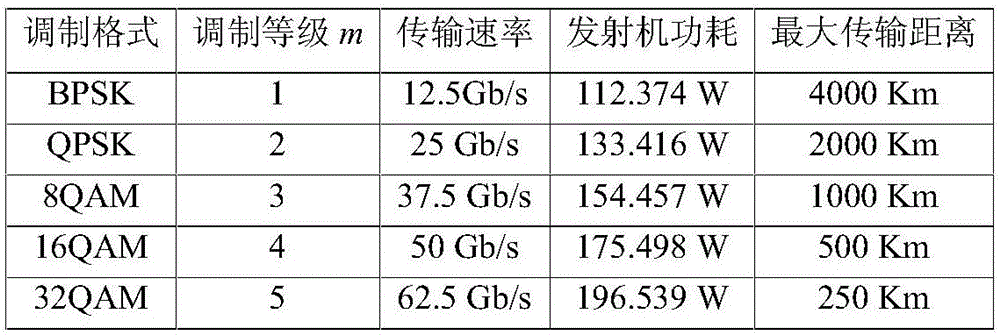Genetic-algorithm-based energy efficiency routing spectrum allocation method for multi-casting optical forest optimization
A genetic algorithm and spectrum allocation technology, applied in the field of energy-efficient routing spectrum allocation, can solve problems such as energy consumption overhead, and achieve the effects of energy-saving transmission, reducing service blocking rate performance, and saving non-renewable energy consumption.
- Summary
- Abstract
- Description
- Claims
- Application Information
AI Technical Summary
Problems solved by technology
Method used
Image
Examples
Embodiment Construction
[0030] The preferred embodiments of the present invention will be described in detail below in conjunction with the accompanying drawings.
[0031] figure 1 Schematic diagram of optical tree segmentation into optical forest transmission, such as figure 1 As shown, the optical tree is divided into a schematic diagram of optical forest transmission. In a flexible optical network, an optical tree is used to propagate multicast requests to each destination node. Each link of an optical tree needs to use the same signal modulation level, and the modulation level is from the longest source to the destination node in the optical tree. That light path is confirmed. Therefore, when the path difference between the longest path in the optical tree and other paths is large, other short paths will be forced to also use the optical signal transmission of the lower modulation level required by the longer path, which makes the spectral efficiency of the optical tree lower. Attached figure 1 It ...
PUM
 Login to View More
Login to View More Abstract
Description
Claims
Application Information
 Login to View More
Login to View More - R&D
- Intellectual Property
- Life Sciences
- Materials
- Tech Scout
- Unparalleled Data Quality
- Higher Quality Content
- 60% Fewer Hallucinations
Browse by: Latest US Patents, China's latest patents, Technical Efficacy Thesaurus, Application Domain, Technology Topic, Popular Technical Reports.
© 2025 PatSnap. All rights reserved.Legal|Privacy policy|Modern Slavery Act Transparency Statement|Sitemap|About US| Contact US: help@patsnap.com



